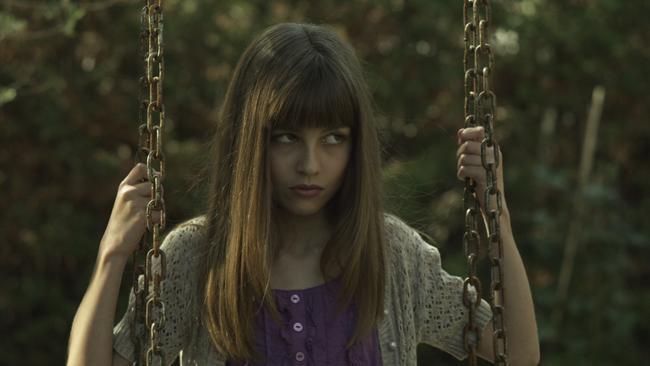It may sound like a made up word, but “psychophony” is an actual phenomenon. Despite how it sounds, it’s not a way to describe fake psychics. The word actually means the act of a spirit talking through a medium. In the 2012 film Psychophony, a psychiatrist wants to prove a theory from a colleague that the auditory and visual hallucinations that plague schizophrenics are not a matter of disease but are actually their abilities to hear and see the dead. That’s actually a pretty cool concept. Did the film deliver?
Released by World Wide Multi Media, Psychophony was written and directed by Xavier Berraondo (Beyond Re-Animator 2003) and stars executive producer Raul Alvarez, Ferran Albiol, Dafnis Balduz, Ferran Carvajal, Leyla Fernandez, Merce Montala, Miriam Planas and Claudia Pons.
The official synopsis for Psychophony:
Psychiatrist Dr. Helena Jarra (Montalà) conducts a series of psychological experiments on several patients afflicted with schizophrenia in order to prove that schizophrenia is connected with paranormal phenomena. Jarra takes a handful of schizophrenics to a secluded house that’s rumored to be haunted.
What Worked
As for cinematography, Psychophony is the perfect amalgam of found footage and third person horror. The film itself is an actors’ reenactment of the video files shot by Dr. Jarra during her study. Rather than a film of awkwardly pieced, jittery images shot from hidden cameras, Berraondo went the reenactment route, which worked because there was no need to explain why the camera was still rolling and pointing in the right direction during the storytelling. The movie is cut with grainy, unfocused footage, sound bites and EMFs caught during the “original” film sessions, which only enhances the feeling of dread. The acting was well done and not too over the top, which is something I always fear when watching Spanish language films. I loved Ferran Carvajal’s slinky, flexible turn as Sergei’s panther. What fantastic acting and cinematography in those scenes. Claudia Pons as Ainara and Dafnis Balduz as Kai were both natural and engaging.
There is no gore or nudity in this film, so watching with scare-loving younger family members would be okay. I also loved the concept itself. As someone who has always believed that schizophrenics are more open to supernatural influences, I couldn’t wait to see this story play out onscreen. Unfortunately, this was where Psychophony fell apart for me.

Psychophony could have been a visual and auditory delight, delving deep into the connections and interactions between schizophrenics and the unsatisfied dead around them. The new spirits that these patients should encounter every day could have made this film into something terrifying and spectacular. Unfortunately, the storyline split off from focusing on the paranormal communication to the patients and doctor trying to save the pre-teen Ainara from an apparent demon possession. There were some cool deaths that, if shown, would have taken this film from average to thrilling, but alas, all kills were either done off camera or without much attention or focus. The CGI was terrible and so over-the-top, I felt the film had flipped over into a Jefferson Starship music video at times.
Final Thoughts
I wasn’t a big fan of Psychophony. As excited as I was to see the film, I was so disappointed in the lack of paranormal/schizophrenic plot that the whole thing just fell flat for me. But that’s just me. If you’re in the mood for some good, clean horror drama and you don’t mind reading subtitles, then give Pyschophony a try. You can order the film here.
 PopHorror Let's Get Scared
PopHorror Let's Get Scared





